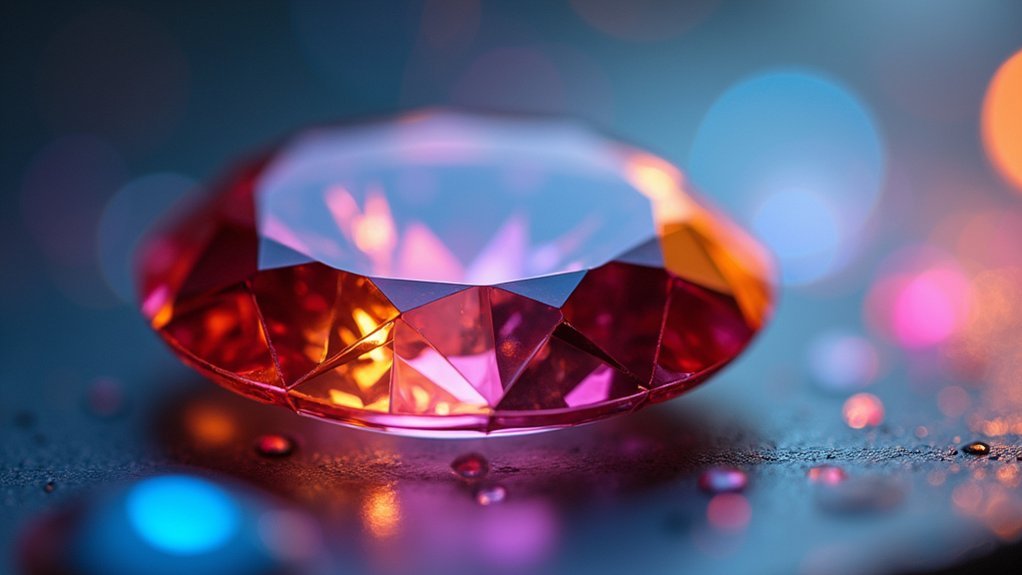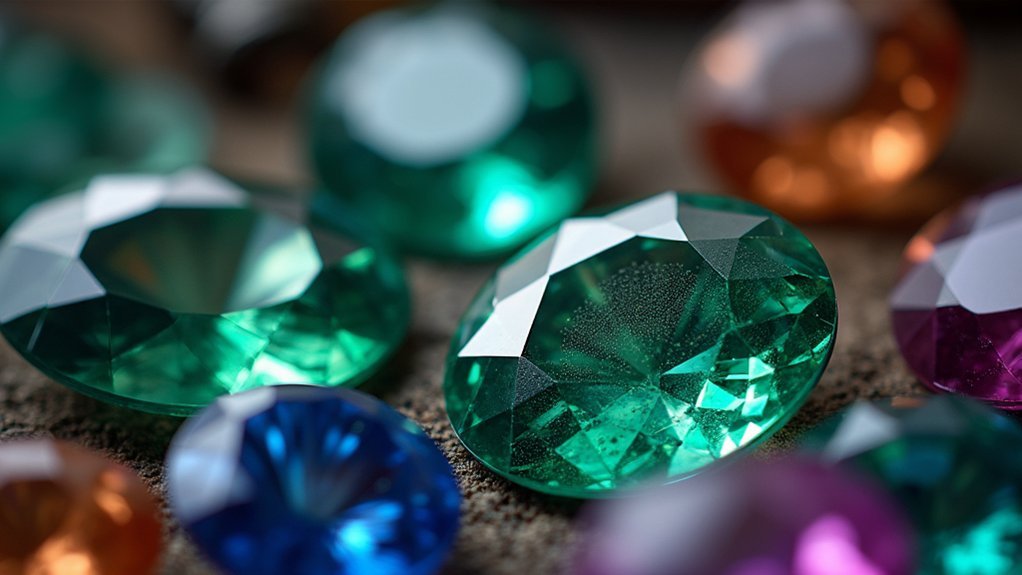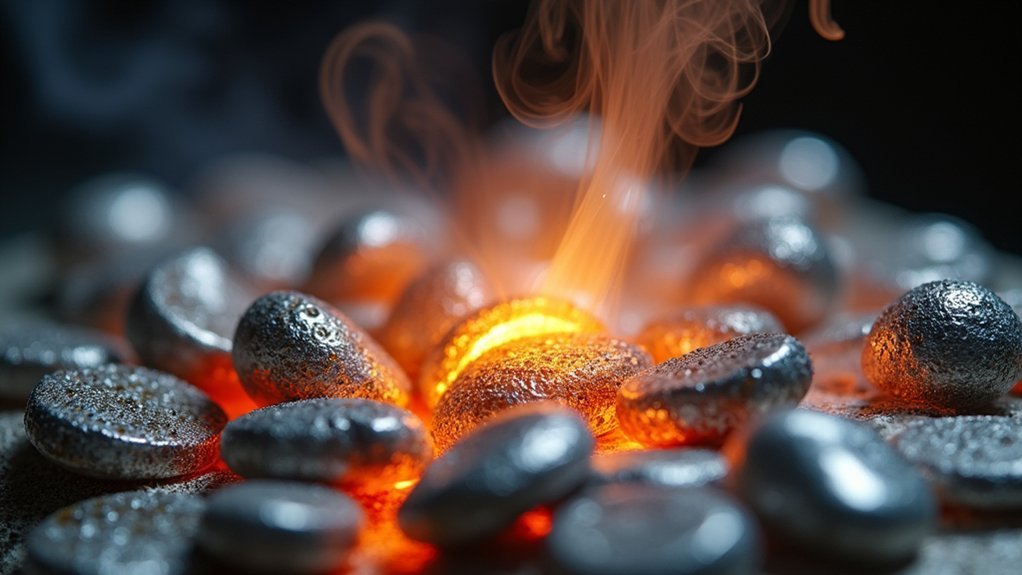You’ll master gem faceting faster when you understand three fundamental terms that control how light behaves in your stones. Brilliance measures how much light returns to your eye through controlled refractive index and precise facet angles. Critical angle determines when light reflects internally versus escaping—diamond’s is 24.4 degrees. Meetpoint refers to perfect facet intersections that maximize scintillation and market value. Master these concepts and you’ll transform ordinary stones into mesmerizing gems that command premium prices.
Brilliance: The Foundation of Light Performance

Brilliance transforms an ordinary stone into a mesmerizing gem that commands attention. When you’re cutting a gem, you control this brilliance through several critical factors.
Your gem’s refractive index determines how much light bends as it enters the stone—higher values mean greater light return. You’ll need precise facet cuts at specific angles to maximize this effect. The critical angle becomes your guide for achieving total internal reflection, preventing light from escaping prematurely.
Your cutting technique directly impacts how light travels through the gem. Poor angles cause light leakage, reducing brilliance considerably.
Don’t overlook clarity either—inclusions scatter light and diminish internal reflection. Master these fundamentals, and you’ll create gems that capture and return light with stunning intensity, transforming raw material into brilliant treasures.
Critical Angle: Understanding Total Internal Reflection
Why does light sometimes escape your gemstone while other times it bounces back with dazzling intensity? The answer lies in understanding critical angle and total internal reflection. When light strikes the boundary between your gemstone and air at angles exceeding the critical angle, it reflects entirely within the stone rather than escaping. This phenomenon greatly enhances brilliance.
Each gemstone’s refractive index determines its unique critical angle. Diamond’s critical angle sits at approximately 24.4 degrees, while other gemstones vary considerably.
As a gem cutter, you’ll use this knowledge strategically when positioning facets. The shape and orientation of each facet must work with the critical angle to maximize light return. Understanding this principle allows you to create cuts that trap and redirect light effectively, producing superior sparkle.
Meetpoint: Achieving Perfect Facet Intersections

Where three or more facets converge, the meetpoint becomes one of the most essential elements determining your gemstone’s optical performance. Perfect alignment at these critical junctions maximizes brilliance and scintillation while minimizing visible gaps that diminish your gem’s appeal.
| Aspect | Poor Meetpoint | Perfect Meetpoint |
|---|---|---|
| Light Performance | Reduced brilliance | Maximum scintillation |
| Visual Appeal | Visible gaps | Seamless alignment |
| Market Value | Lower pricing | Premium valuation |
During cutting and polishing, you’ll need precise angle scales and protractors to achieve seamless facet intersections. Regular checking throughout the faceting process prevents extensive reworking later, maintaining your design’s integrity. When light bounces effectively between properly aligned facets, you’ll create that dazzling effect every gem cutter seeks.
Frequently Asked Questions
What Is the Term for Gem Cutting?
You’ll call gem cutting “faceting” when you’re creating flat surfaces on gemstones. If you’re someone who cuts, polishes, and engraves stones professionally, you’re known as a “lapidary.”
What Is the Easiest Gemstone to Facet?
You’ll find quartz, especially amethyst, is the easiest gemstone to facet. It’s relatively soft at 7 on Mohs scale, abundant, and forgiving during cutting. Garnet and citrine also work well for beginners.
What Is the Hardest Gem Shape to Cut?
You’ll find the round brilliant cut is the hardest gem shape to cut. It requires precise angles across 58 facets, perfect symmetry, and meticulous planning to achieve maximum brilliance and light performance.
What Do You Call a Person Who Cuts, Polishes, and Engraves Precious Stones?
You’d call a person who cuts, polishes, and engraves precious stones a “lapidary.” This term comes from Latin “lapis” meaning stone, and you’ll find these skilled artisans working with various gemstone cutting techniques.
In Summary
You’ve now grasped the three essential terms that’ll elevate your gem cutting skills. Brilliance shows you how light performs in your stones, critical angle helps you control total internal reflection, and meetpoint guarantees your facets align perfectly. Master these concepts, and you’ll create gems that truly shine. Don’t just memorize the definitions—practice applying them to every stone you cut. Your precision with these fundamentals will separate amateur work from professional results.





Leave a Reply